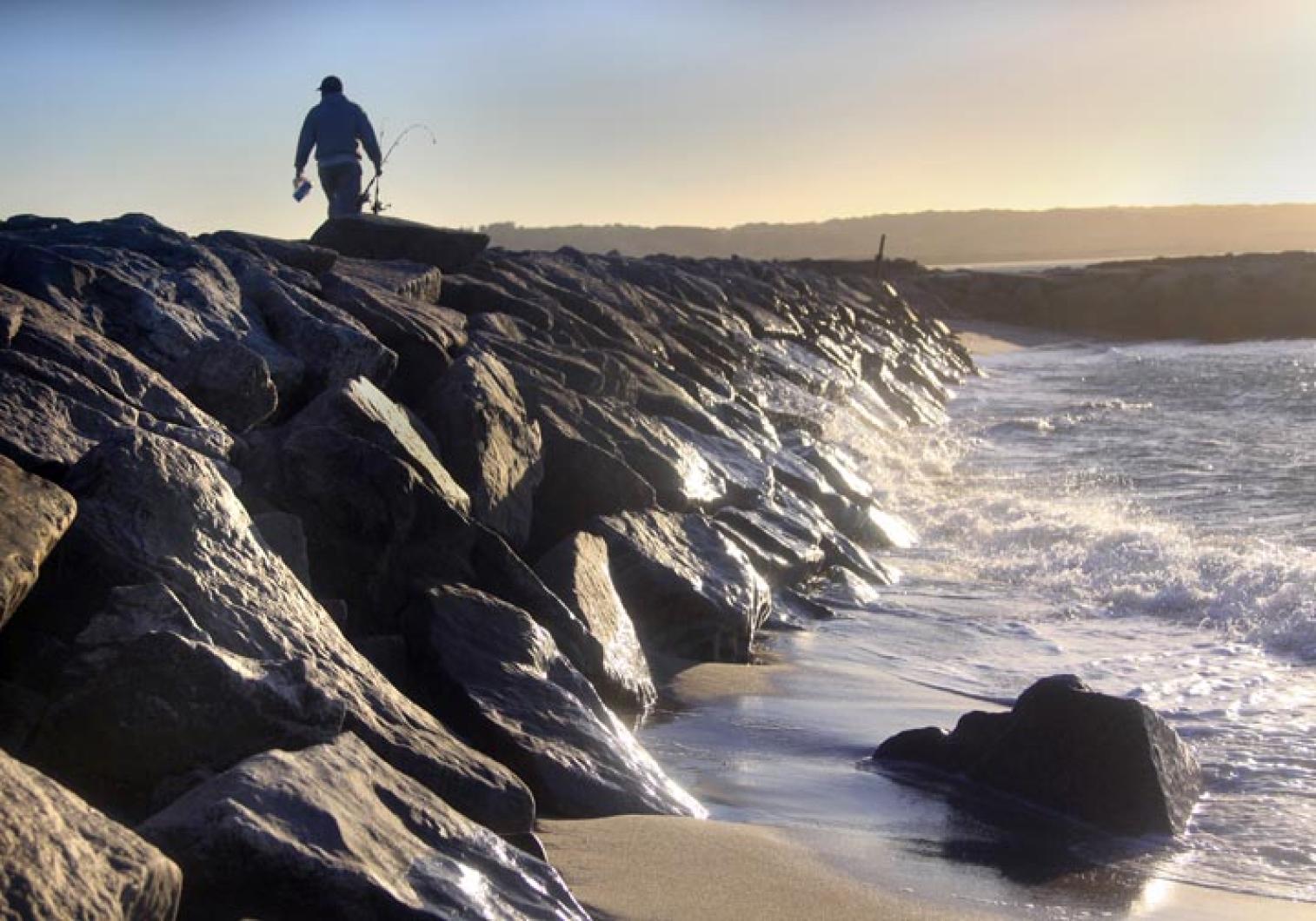Cochlodinium, the rust-colored algae bloom that has turned up in Cape Pogue and Sengekontacket Ponds, has now invaded Lagoon Pond, Martha’s Vineyard Shellfish Group director Rick Karney confirmed this week. The algae was found in the west arm of the Lagoon.
Cochlodinium is not harmful to humans but can be harmful to shellfish and is the subject of increasing attention and study by marine biologists. The algae was found in Cape Pogue Pond late this summer. Later it was detected in Sengekontacket. On Wednesday this week Mr. Karney put a sample from Lagoon Pond under a microscope and confirmed that it was Cochlodineum polykrikoides. He also found evidence that there is still prorocentrum, another algae that infected the pond last summer.
Cochlodinium is also on Nantucket, according to Peter B. Boyce, a research associate at the Maria Mitchell Association on that island. “I just scooped up a bucket of water, and it has a brownish color. It is definitely cochlodinium,” Mr. Boyce said this week. “The concentrations here this year are low enough that we don’t expect it to do much damage.” He said in 2008 the algae was believed to be responsible for damaging a saltwater scallop nursery. “We can’t prove it, but we lost 40 per cent of the bay scallops in the cages when the cochlodinium was high. It has been shown, microscopically, to induce lesions in the gut of the bay scallop.”
Sandra E. Shumway, a scientist with the University of Connecticut who has studied bay scallops and harmful algae blooms, said much is still being learned about cochlodinium.
“We know it is not harmful to humans. We are not sure whether it appears in brackish water, but in most cases it has been observed in saltwater,” she said.
She has applied for a grant to do a three-year study of cochlodinium. “We want to work with folks in the field who have the natural blooms, to see the impacts they have in the field,” she said. “All shellfish are not impacted by harmful algae in the same way.”





Comments
Comment policy »